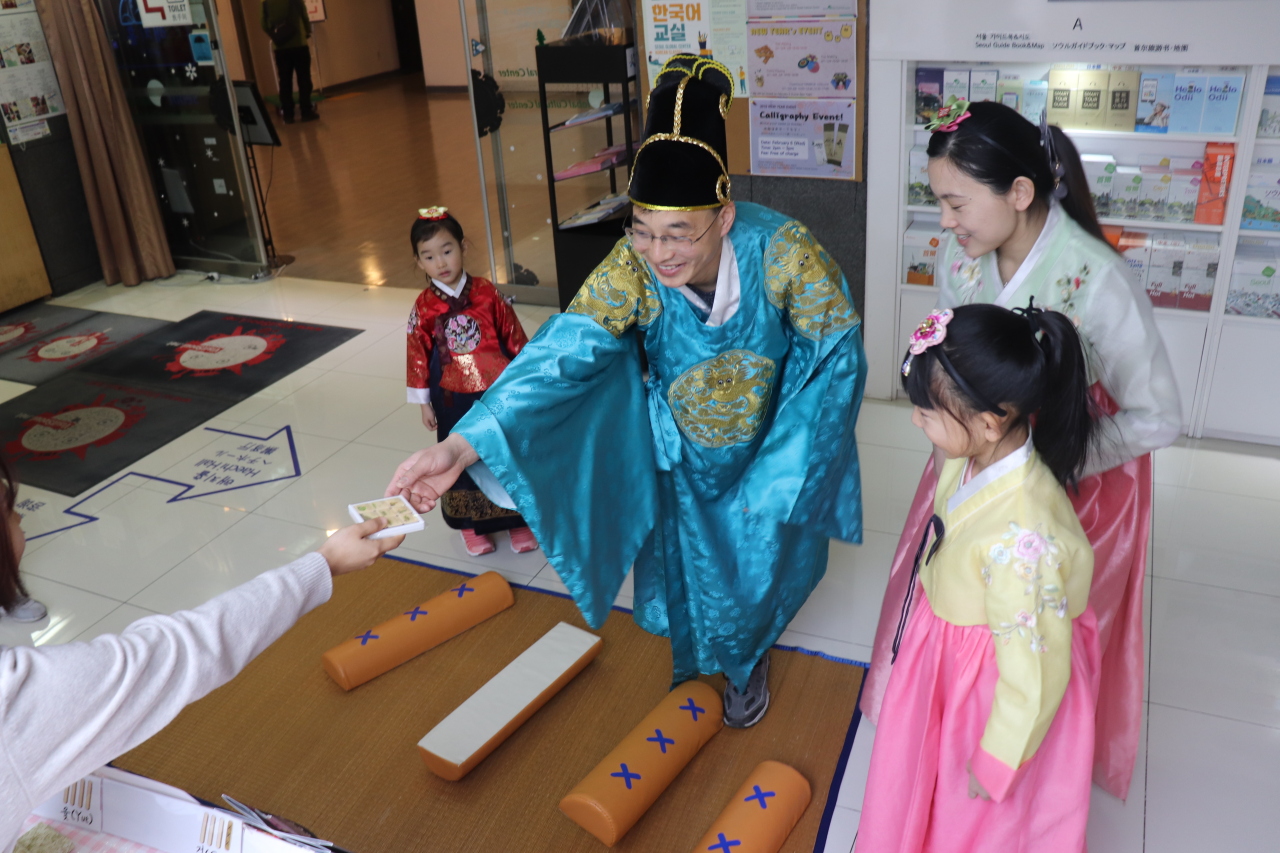As Koreans halt operations and leave on an exodus for their hometowns for the Lunar New Year holiday, travelers and expats alike may find themselves scratching their heads as to how to spend their weekend.
This year, Seollal falls on Jan. 24-26, giving South Koreans a three-day weekend to celebrate with their loved ones.
Customs, family and food are at the heart of this national holiday. However, in recent times, there has been a shift away from traditional celebrations, meaning more to do for those spending Seollal solo.
Traditionally, Korean households ring in the new year with eating tteokguk and jeon at breakfast, performing rituals including “sebae,” or bowing to elders, and “charye,” or ancestral rites, in the morning and pass the time by playing games.
 |
Visitors dress up in hanbok and play traditional Korean games at the Seoul Global Cultural Center in Myeong-dong, Seoul. (Seoul Global Cultural Center) |
Whether it’s the increase in single-person households, the rise in overseas travel -- some airlines have put on extra flights -- or the pushback against the disproportionate load of domestic labor that women take on during the holiday period, the way people spend Seollal is evolving.
Despite the quietness that blankets Seoul over the extended holiday period, there are still plenty of activities happening in the heart of the city.
While most businesses cease operations, museums and palaces such as Gyeongbokgung and Changdeokgung are open throughout the holiday period, allowing the public to partake in traditional customs.
During Seollal, admission is free into these palaces and a range of cultural activities are on offer for those wanting to partake in sebae and information sessions about ondol, a Korean floor heating system.
The Seoul Global Cultural Center in Myeong-dong will host Lunar New Year activities, including dressing up in hanbok, making Lunar New Year cards and playing traditional games like yunnori and tuho.
The National Folk Museum of Korea, located next to Gyeongbokgung, will also be open with an exhibition that honors the year of the rat, entitled “Even a Rat has Its Day,” which runs until March 1.
On Lunar New Year’s Day, Jan. 25, The National Gugak Center will have a New Year performance with traditional Korean Music at 3 p.m.
While the National Museum of Korea will be closed on Lunar New Year’s Day, there will be a free performance to celebrate the new year, called “Feast of Culture” on Jan. 26.
Step away from the history and into the modernity of the city by visiting one of Seoul’s iconic amusement parks including Lotte World, Seoul Land or Everland.
These amusement parks will be open over Seollal, with Lunar New Year-themed shows and dances on each day.
Seoul Land has extended trading hours, open until 9 p.m. every night of the holiday where the park transforms into a winter light festival.
Seollal is an optimal time to hike Seoul’s mountains to avoid the usual foot traffic of normal weekends, and Seoul’s mountainous terrain offers a multitude of picturesque vantage points into Gyeongbokgung, Seoul’s skyline and the Han River.
The trails on some of the higher mountains like Bukhansan, Seoul’s highest peak, can get slippery, particularly with winter ice, so proper gear is advised.
However, mountains like Namsan, Inwangsan or Gwanaksan have wide trails and walkways to the top, making them more accessible in colder months.
By Esther Shim (
esther@shimfamily.com)
Intern reporter





![[Weekender] Korea's traditional sauce culture gains global recognition](http://res.heraldm.com/phpwas/restmb_idxmake.php?idx=644&simg=/content/image/2024/11/21/20241121050153_0.jpg)


